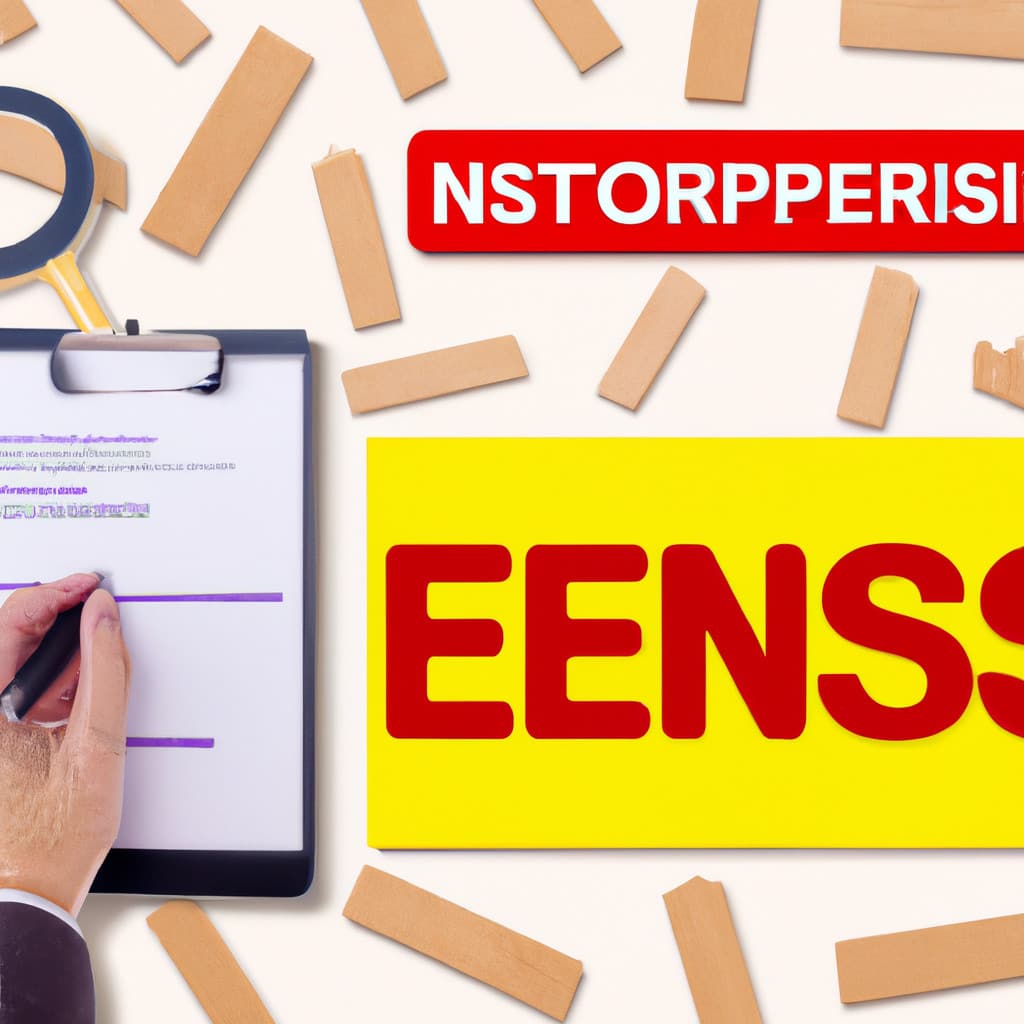5 Key Points You Need to Know: Is PowerShell Case Sensitive?
As a PowerShell expert, I have encountered countless queries from users who are just beginning their journey into this powerful scripting language. One question that keeps coming up is: “Is PowerShell case sensitive?” The confusion is understandable, as languages like Python and JavaScript are case-sensitive, while others like Visual Basic are not. In this article, we will dive into the intricacies of PowerShell’s case sensitivity, unveil its nuances, and ultimately answer this ever-present question. Let’s begin our journey through the following five key points:
1. Understanding case sensitivity in PowerShell
2. String comparison and case sensitivity
3. Variable names and case sensitivity
4. Functions, Cmdlets, and case sensitivity
5. Dealing with file systems and case sensitivity
1. Understanding case sensitivity in PowerShell
PowerShell is designed to be both user-friendly and powerful, making it an ideal choice for system administrators and developers alike. When it comes to case sensitivity, PowerShell takes a rather unique approach. By default, PowerShell is case insensitive. However, it also provides ways for you to enforce case sensitivity when needed. This flexibility allows users to choose the level of strictness that best suits their requirements.
2. String comparison and case sensitivity
One area where case sensitivity often comes into play is during string comparisons. In PowerShell, you can perform both case-sensitive and case-insensitive string comparisons using various techniques. Let’s explore some examples to illustrate this concept:
*Case-insensitive comparison (default):*
“`powershell
“PowerShell” -eq “powershell” # Returns True
“`
*Case-sensitive comparison using the `-ceq` operator:*
“`powershell
“PowerShell” -ceq “powershell” # Returns False
“`
You can also use other case-sensitive operators like `-cne`, `-clt`, `-cgt`, `-cle`, and `-cge` for various string comparison scenarios.
*Forcing case sensitivity using the `CompareTo()` method:*
“`powershell
(“PowerShell”).CompareTo(“powershell”) # Returns a non-zero value, indicating a case-sensitive difference
“`
3. Variable names and case sensitivity
Variable names in PowerShell are case insensitive by default. It means that you can reference a variable with any combination of capitalization and still access the same data. Here’s an example to demonstrate this:
“`powershell
$myVariable = 42
Write-Output $MyVariable # This will output “42” regardless of the capitalization of the variable name
“`
However, it is important to note that PowerShell scripts’ readability might be affected if variable names are not consistently capitalized. It’s a best practice to adopt a consistent naming convention throughout your scripts.
4. Functions, Cmdlets, and case sensitivity
Similar to variable names, function and cmdlet names in PowerShell are also case insensitive. Consider the following example:
“`powershell
function Test-MyFunction {
Write-Output “Hello, World!”
}
test-myFunction # This will successfully call the function, regardless of the capitalization
“`
In the case of cmdlets, you can use any desired capitalization when invoking them:
“`powershell
Get-ChildItem # Equivalent to get-childitem or GET-CHILDITEM
“`
Although function and cmdlet names are case insensitive, it’s essential to maintain a consistent capitalization pattern for improved readability.
5. Dealing with file systems and case sensitivity
When working with file systems in PowerShell, the case sensitivity depends on the underlying file system itself. For instance, the NTFS file system, which is commonly used in Windows, is case insensitive but case preserving. On the other hand, Linux file systems like ext4 are case sensitive.
To ensure your scripts function correctly across different file systems, you can handle file paths’ case sensitivity using the `-CaseSensitive` switch available in some cmdlets, such as `Join-Path`.
“`powershell
Join-Path -Path “C:Demo” -ChildPath “test.txt” -CaseSensitive
“`
With these five key points, we can now conclusively answer the question — Is PowerShell case sensitive? By default, PowerShell is case insensitive. However, it offers several options for enforcing case sensitivity when needed.
Remember to consistently capitalize variable names, functions, and cmdlets for improved readability. And while working with different file systems, be aware of their inherent case sensitivity behavior and handle them accordingly in your scripts. Armed with this knowledge, you will be better equipped to wield the power of PowerShell effectively and create efficient, high-quality scripts.
How To Fix PowerShell Has Stopped Working or Not Opening In Windows 10
MAJOR Wi-Fi Exploit Found! ALL Your Devices At Risk! (How “Krack Attack” Works)
Is the PowerShell variable case-sensitive?
In the context of the PowerShell command-line, it is important to know that PowerShell variables are not case-sensitive. This means that you can reference a variable using different letter cases and still get the same value. For example, `$myVariable`, `$MyVariable`, and `$MYVARIABLE` all point to the same data.
How can I enable case-sensitivity in PowerShell?
In PowerShell, you can enable case-sensitivity for string comparisons and filtering by using the -CaseSensitive flag or -Ceq, -Cne, -Clt, -Cle, -Cgt, and -Cge comparison operators.
For example, when using the Where-Object cmdlet to filter objects based on their properties, you can include the -CaseSensitive flag to perform case-sensitive filtering:
“`powershell
Get-ChildItem | Where-Object -CaseSensitive -Property Name -eq “example.txt”
“`
Alternatively, you can use the -Ceq (case-sensitive equals) operator within a script block:
“`powershell
Get-ChildItem | Where-Object { $_.Name -Ceq “example.txt” }
“`
Other case-sensitive comparison operators include:
– -Cne (case-sensitive not equals)
– -Clt (case-sensitive less than)
– -Cle (case-sensitive less than or equal)
– -Cgt (case-sensitive greater than)
– -Cge (case-sensitive greater than or equal)
These operators will allow you to perform case-sensitive comparisons in your PowerShell command-line operations.
How can I disregard case sensitivity in PowerShell?
In PowerShell, you can disregard case sensitivity by using the -CaseSensitive or -C switch in certain cmdlets, such as Select-String and Compare-Object. You can also use the -eq operator for case-insensitive string comparison.
For example, when using the Select-String cmdlet, you can add the -CaseSensitive switch to perform a case-sensitive search:
“`powershell
Get-Content “example.txt” | Select-String -Pattern “PowerShell” -CaseSensitive
“`
Alternatively, you can use the -C switch for brevity:
“`powershell
Get-Content “example.txt” | Select-String -Pattern “PowerShell” -C
“`
When comparing strings, you can use the -eq operator for a case-insensitive comparison:
“`powershell
$string1 = “PowerShell”
$string2 = “powershell”
if ($string1 -eq $string2) {
Write-Output “Strings are equal.”
} else {
Write-Output “Strings are not equal.”
}
“`
In this example, the output will be “Strings are equal.” because the -eq operator performs a case-insensitive comparison.
Is PowerShell case-sensitive on Linux?
Yes, PowerShell is case-sensitive on Linux. When using PowerShell in a Unix-based environment, such as Linux or macOS, the case sensitivity rules follow the conventions of that particular operating system. Since Linux file systems are case-sensitive, PowerShell behaves accordingly by respecting the case-sensitive nature of Linux.
For example, variables, command names, and filenames will all require the proper casing to be used in order for them to be recognized correctly. Keep this in mind when working with PowerShell scripts on a Linux system, as it can lead to unexpected behavior if you’re used to case-insensitive environments like Windows.
Does PowerShell command-line treat variables and cmdlets as case-sensitive or case-insensitive?
In PowerShell command-line, both variables and cmdlets are treated as case-insensitive. This means that you can use upper or lower case letters interchangeably when referencing variables or cmdlets without affecting their behavior or output.
How do I enforce case sensitivity when working with strings in PowerShell command-line?
In PowerShell command-line, you can enforce case sensitivity when working with strings by using the -c or -caseSensitive options with comparison operators.
For example, let’s say you have two strings, $string1 and $string2, and you want to check if they are equal with case sensitivity:
“`powershell
$string1 = “PowerShell”
$string2 = “powershell”
# Case-sensitive comparison
if ($string1 -ceq $string2) {
Write-Host “Strings are equal.”
} else {
Write-Host “Strings are not equal.”
}
“`
In this example, we use the -ceq operator, which performs a case-sensitive equality comparison. Similarly, you can use other case-sensitive comparison operators like -cne (not equal), -clt (less than), -cle (less than or equal), -cgt (greater than), and -cge (greater than or equal).
Keep in mind that by default, PowerShell uses case-insensitive comparisons, so it’s important to use these case-sensitive options when needed.
What are the best practices for handling case sensitivity in PowerShell script comparisons and operations?
In PowerShell, handling case sensitivity in script comparisons and operations is essential for achieving accurate results and avoiding issues. Below are some best practices for handling case sensitivity in PowerShell script comparisons and operations:
1. Use the right comparison operators: In PowerShell, by default, most comparison operators are case-insensitive. However, you should be aware of the case-sensitive versions of these operators:
– -eq (case-insensitive) vs -ceq (case-sensitive) for equality
– -ne (case-insensitive) vs -cne (case-sensitive) for inequality
– -like (case-insensitive) vs -clike (case-sensitive) for wildcard matching
– -match (case-insensitive) vs -cmatch (case-sensitive) for regular expression matching
2. Use StringComparison Enumeration: When comparing strings in .NET Framework methods, use the StringComparison enumeration to specify the desired case sensitivity. For example:
“`powershell
$string1.Equals($string2, [System.StringComparison]::OrdinalIgnoreCase)
“`
3. Manipulate case for consistent comparisons: If you’re unsure of the case sensitivity of an operation, convert both operands to the same case (either upper or lower) using the .ToUpper() or .ToLower() methods, and then perform the comparison. This ensures a case-insensitive comparison.
4. Leverage built-in cmdlets: Many built-in PowerShell cmdlets have parameters to control case sensitivity, such as the -CaseSensitive switch in Select-String and -Exact switch in Get-ChildItem. Familiarize yourself with these cmdlets and their case-sensitivity options.
5. Be mindful of environment variables: Environment variables are case-insensitive in Windows, but case-sensitive in Linux. To avoid issues when working with environment variables, use the Get-EnvironmentVariable cmdlet, which handles case sensitivity for you based on the current platform.
By following these best practices, you can effectively handle case sensitivity in your PowerShell script comparisons and operations, ensuring accurate results and widespread compatibility.



